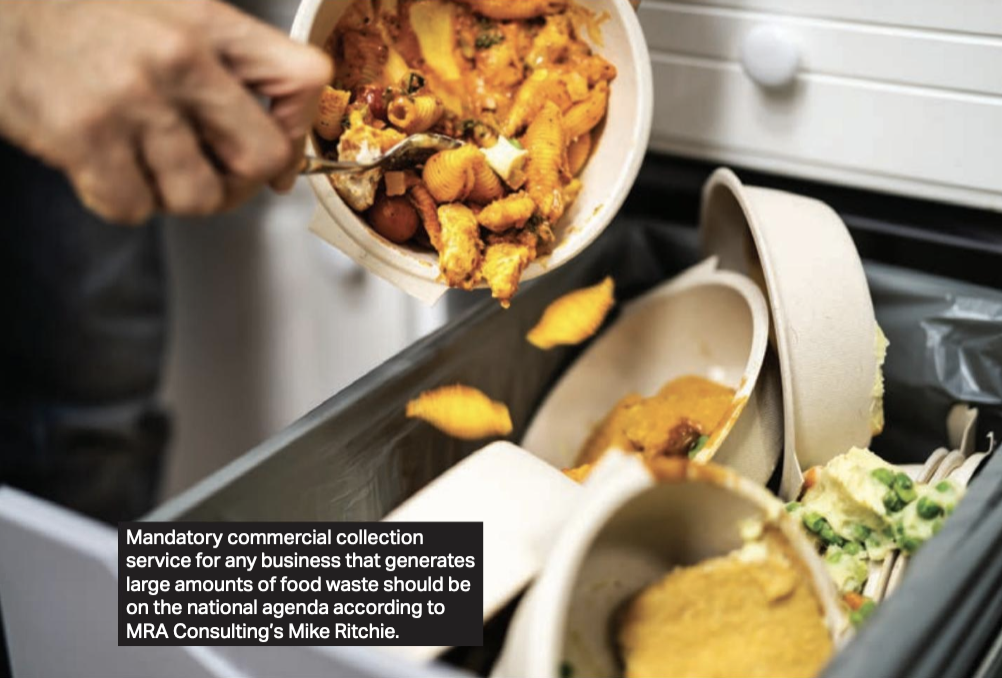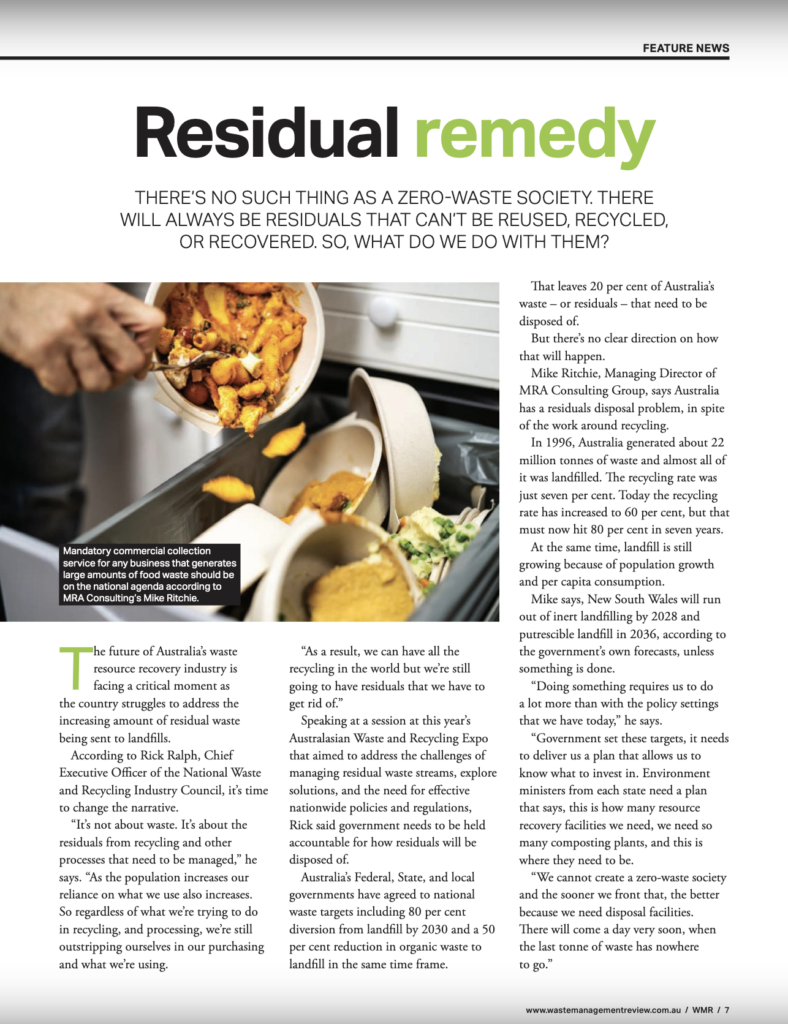Residual remedy
Mike Ritchie interview, Waste Management Review

The future of Australia’s waste resource recovery industry is facing a critical moment as the country struggles to address the increasing amount of residual waste being sent to landfills.
According to Rick Ralph, Chief Executive Officer of the National Waste and Recycling Industry Council, it’s time to change the narrative.
“It’s not about waste. It’s about the residuals from recycling and other processes that need to be managed,” he says. “As the population increases our reliance on what we use also increases. So regardless of what we’re trying to do in recycling, and processing, we’re still outstripping ourselves in our purchasing and what we’re using.
“As a result, we can have all the recycling in the world but we’re still going to have residuals that we have to get rid of.»
Speaking at a session at this year’s Australasian Waste and Recycling Expo that aimed to address the challenges of managing residual waste streams, explore solutions, and the need for effective nationwide policies and regulations, Rick said government needs to be held accountable for how residuals will be disposed of.
Australia’s Federal, State, and local governments have agreed to national waste targets including 80% diversion from landfill by 2030 and a 50% reduction in organic waste to landfill in the same time frame.
That leaves 20% of Australia’s waste – or residuals – that need to be disposed of.
But there’s no clear direction on how that will happen.
Mike Ritchie, Managing Director of MRA Consulting Group, says Australia has a residuals disposal problem, in spite of the work around recycling.
In 1996, Australia generated about 22 million tonnes of waste and almost all of it was landfilled. The recycling rate was just 7%. Today the recycling rate has increased to 60%, but that must now hit 80% in seven years.
At the same time, landfill is still growing because of population growth and per capita consumption.
Mike says, New South Wales will run out of inert landfilling by 2028 and putrescible landfill in 2036, according to the government’s own forecasts, unless something is done.
“Doing something requires us to do a lot more than with the policy settings that we have today,” he says.
“Government set these targets, it needs to deliver us a plan that allows us to know what to invest in. Environment ministers from each State need a plan that says, this is how many resource recovery facilities we need, we need so many composting plants, and this is where they need to be.
Tweet
“We cannot create a zero-waste society and the sooner we front that, the better because we need disposal facilities. There will come a day very soon, when the last tonne of waste has nowhere to go.”
Mike says the industry should be lobbying for increased landfill levies across Australia. By his calculations, increasing levies by $6 per tonne per year for three years would raise about $240 million just in New South Wales. That money would then be used to fund resource recovery infrastructure and services.
Replicating that across all States will recover about 8 million tonnes of additional material.
Also on the agenda should be a mandatory commercial collection service for any business that generates large amounts of food (COFO) above a certain threshold. And there must be a food organics garden organics (FOGO) collection at every household. Nationally, that’s another 7 million tonnes of the 27 million tonnes being landfilled today.
For residuals that have embodied energy – energy-from-waste (EfW). “Why would we landfill them when we can extract their energy value?” Mike asks. “If you’ve got a residual waste stream, and you can’t do anything with it, in terms of higher order value, you’ve got a binary decision, burn or bury.
“In my view, always go energy-from-waste subject, of course, to the normal environmental controls.”
Tweet
However, he describes Australia’s energy-from-waste policy as a “basket case” with two plants currently being built in Western Australia, four or five in Victoria in the planning and approvals process and the New South Wales Government putting the line through four or five projects that were promoted in urban areas.
“Where are we in terms of policy settings to deal with residuals? It’s a massive fail,” Mike says.
“We’re not going to hit the national packaging target; we’re not going to get anywhere near our targeted reducing residuals to landfill under current policy settings.”
“We need to go harder, and we need to go faster. And we need to focus the debate. We need to get focused on the two or three things that matter and speak with one voice to government.”
Mike Ritchie, is the Managing Director at MRA Consulting Group.
This article has been published by the following media outlets:




